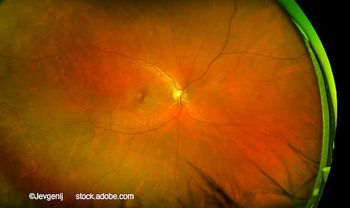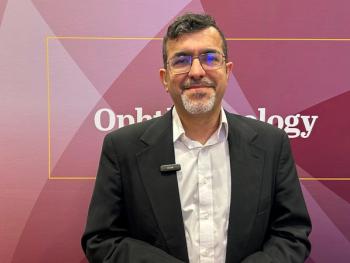
Light-adjustable lens yields positive results in studies
Accumulating results from studies investigating a light-adjustable IOL indicate this technology can afford precise postoperative control over refractive outcomes.
"With current IOL technology, one-third of patients are left with residual spherical refractive error of 0.75 D or more and another one-third have residual cylinder of more than 0.5 D," said Dr. Chayet, medical director, Codet-Aris Vision Institute, Tijuana, Mexico. "Experience with the [lens] indicates it allows predictable correction of residual spherocylindrical errors to optimize distance vision outcomes after cataract surgery, and promising results are also being obtained in various protocols for customized presbyopic solutions."
The IOL is made of a customizable photosensitive silicone macromer and features a standard 6-mm optic with a square edge and PMMA haptics. The implantation involves a standard cataract surgery procedure performed through a self-sealing, 3- to 3.5-mm clear corneal incision with a 4- to 5.5-mm continuous curvilinear capsulorhexis. Adjustment for spherical and cylindrical errors is performed 1 to 4 weeks postoperatively by irradiating the lens with a spatially profiled beam delivered using a slit-lamp-based digital light device.
Results from a phase I FDA study investigating spherical power adjustments for residual myopia or hyperopia showed that 93% of eyes were within 0.25 D of intended refraction and 100% were within 0.5 D. No eyes experienced any loss of BSCVA, Dr. Chayet said.
"Six-month follow-up [was expected to be] available in December 2009 from 50 eyes enrolled in the phase II FDA trial, and it is anticipated that the phase III study will start early in 2010," he said.
Excellent results with spherocylindrical adjustments of the lens power also have been obtained in Europe where the IOL has been commercially available since 2008.
"In Spain, Drs. Jose Marin and Pablo Artal found that LAL surgery was associated with not only better UCVA outcomes compared with eyes with a conventional IOL implanted, but also much tighter results in terms of the standard deviation for mean SE," Dr. Chayet said.
In Germany, Volker Rasch, MD, reported that 91% of his 22 patients with the lens implanted achieved UCVA within 1 Snellen line of the pre-surgical BSCVA. In a series of 75 eyes, Burkhard Dick, MD, found a very high percentage, 96%, achieved UCVA of 20/25 or better.
Dr. Chayet said his experience with cylindrical corrections of up to 2.5 D has been excellent. Vectorial analyses of the data demonstrate very tight results for both magnitude of cylinder and axis with accuracies within 0.25 D and 1°, respectively.
"Using the [light-adjustable IOL] instead of a conventional toric IOL, there is no need for the surgeon to make any modifications in technique with respect to incision location or IOL positioning," Dr. Chayet said.
Newsletter
Don’t miss out—get Ophthalmology Times updates on the latest clinical advancements and expert interviews, straight to your inbox.



















































.png)


